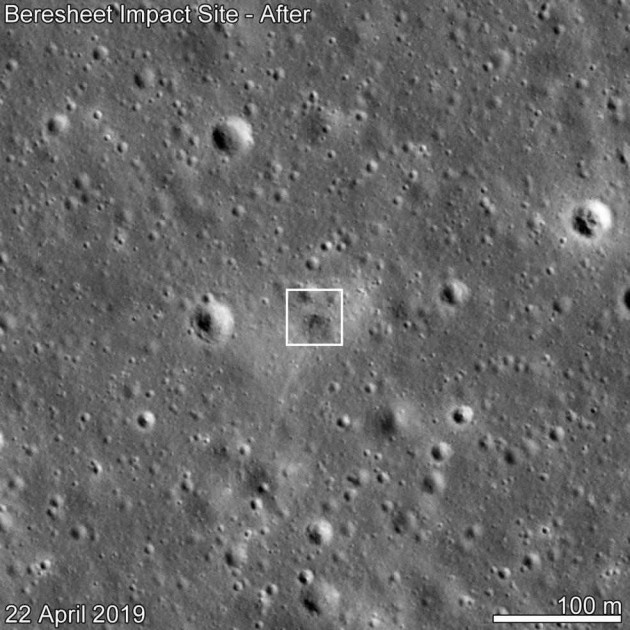A NASA spacecraft in orbit around the Moon spotted the crash site of an Israeli robotic lander named Beresheet, which slammed into the lunar surface on a region of the Moon called “Sea of Serenity” where it crash-landed on April 11. New pictures from the spacecraft show that the lander left a dark, 10-meter-long smudge across the Moon where it hit and then disintegrated.
SpaceIL, a non-profit organization, attempted to land its spacecraft on top of a SpaceX Falcon 9 rocket in the ancient volcanic field on the near side of the Moon on April 11. Before the crash, the lander was poised to make history by becoming the first spacecraft made with mostly private funding to touch down on the surface of the Moon. Just before it crashed, it sent back one final image of the lunar surface.
As soon as its orbit placed NASA’s Lunar Reconnaissance Orbiter (LRO) over the landing site on April 22, LRO imaged Beresheet’s impact site, NASA said in a statement on late Wednesday. LRO took the impact site image from 90 km above the surface. LRO could not detect whether Beresheet formed a surface crater upon impact.
The US space agency said, “The cameras captured a dark smudge, about 10 meters wide, that indicates the point of impact. The dark tone suggests a surface roughened by the hard landing, which is less reflective than a clean, smooth surface.”
NASA further added, “There are many clues that we’re actually looking at a man-made crater instead of a meteoroid-caused one. This is an important consideration, since the Moon, having no atmosphere, is constantly bombarded by space rocks that leave craters.”
According to researchers at NASA and Arizona State University, scientists analysing the spacecraft images think this may have been caused by gases or other particles zooming away from the accident. This may have smoothed out the area and made things more reflective.
While Beresheet’s crash was a big loss for SpaceIL engineers, but it does provide a great opportunity to better understand how things crashing into the lunar surface affect the Moon’s environment. By keeping an eye on this site, scientists can watch as the rocks and dust in this area evolve over time following an impact. So there’s at least one upside to Beresheet failure to stick its landing.

Leave a Reply